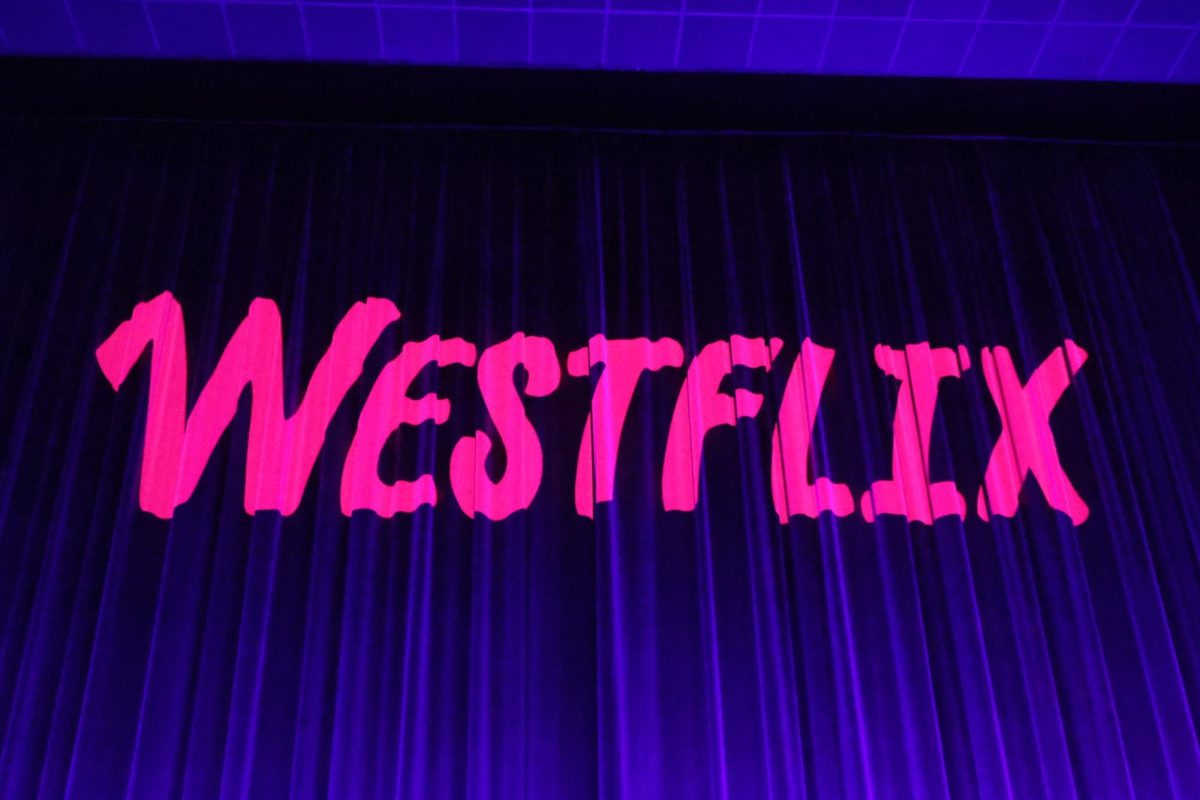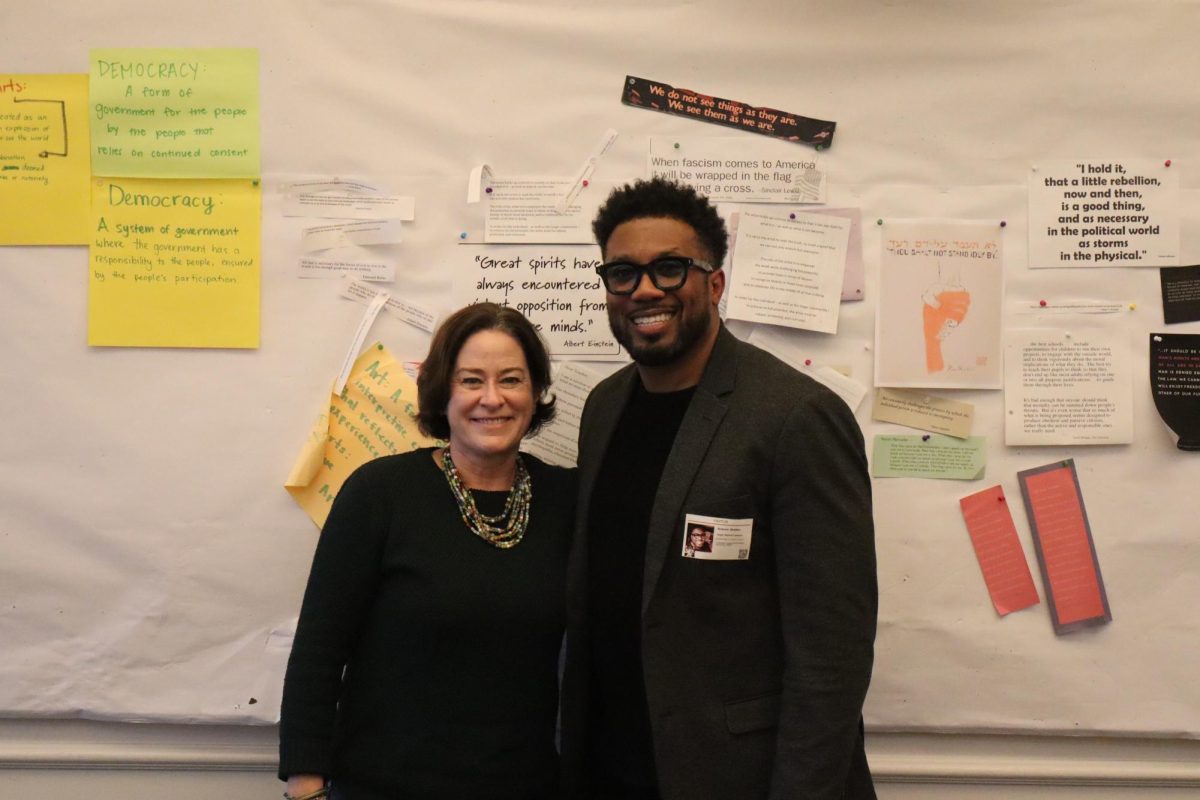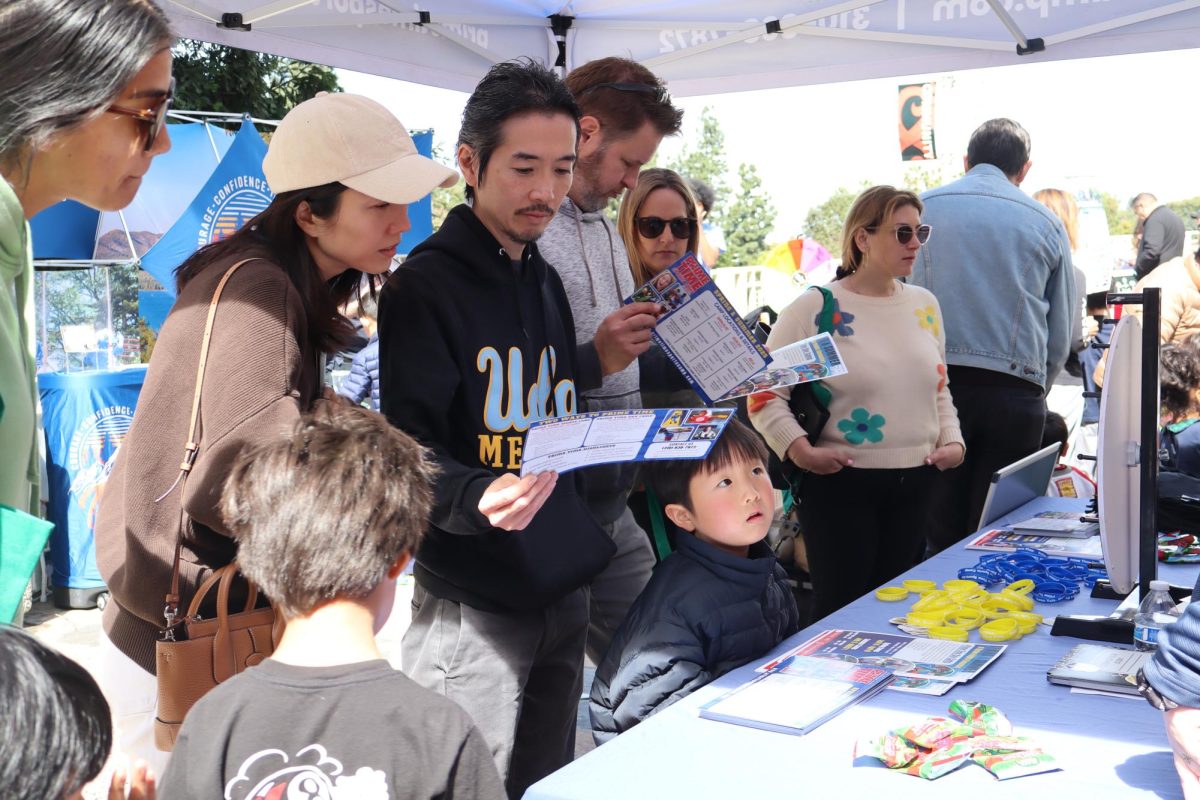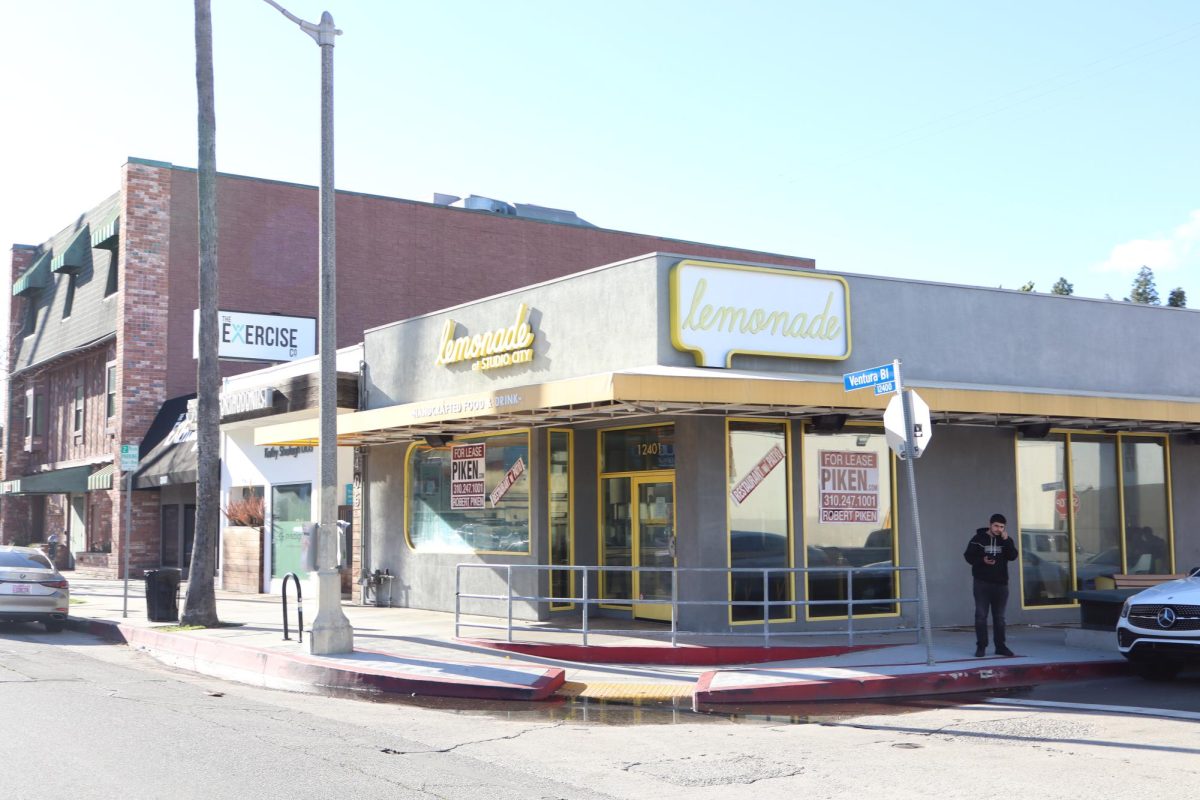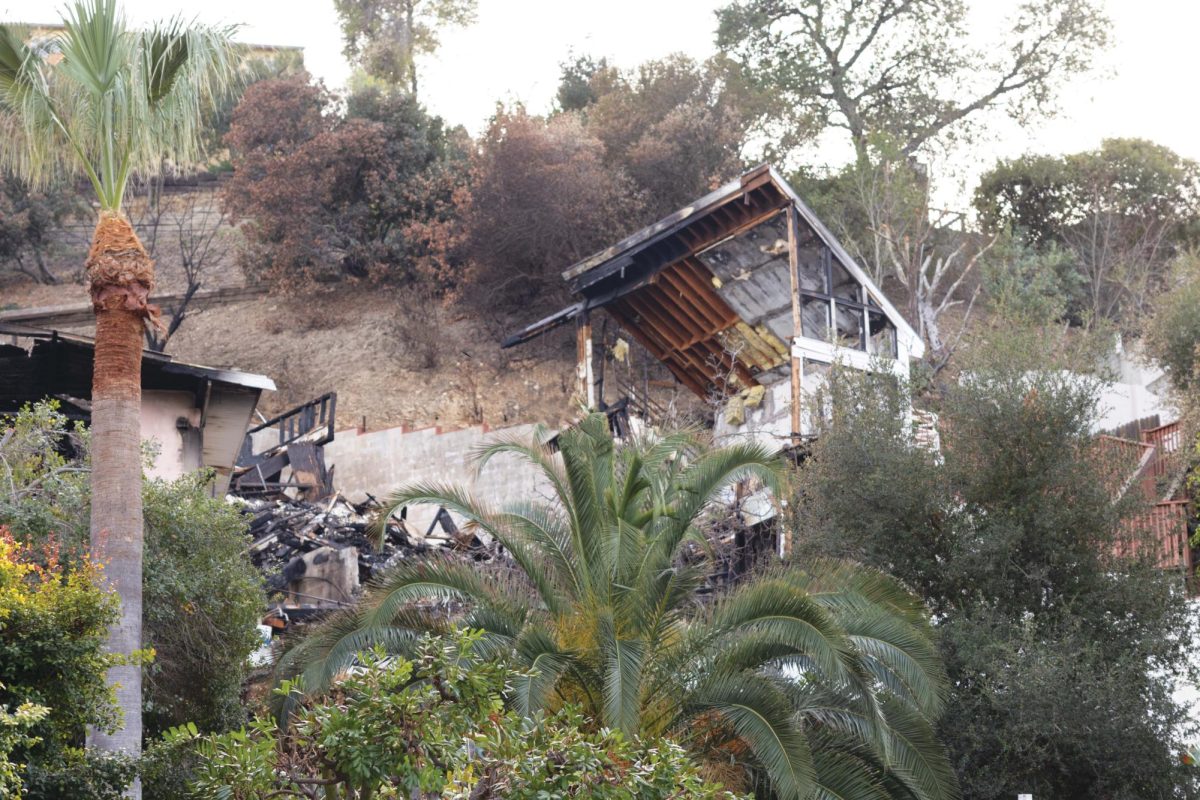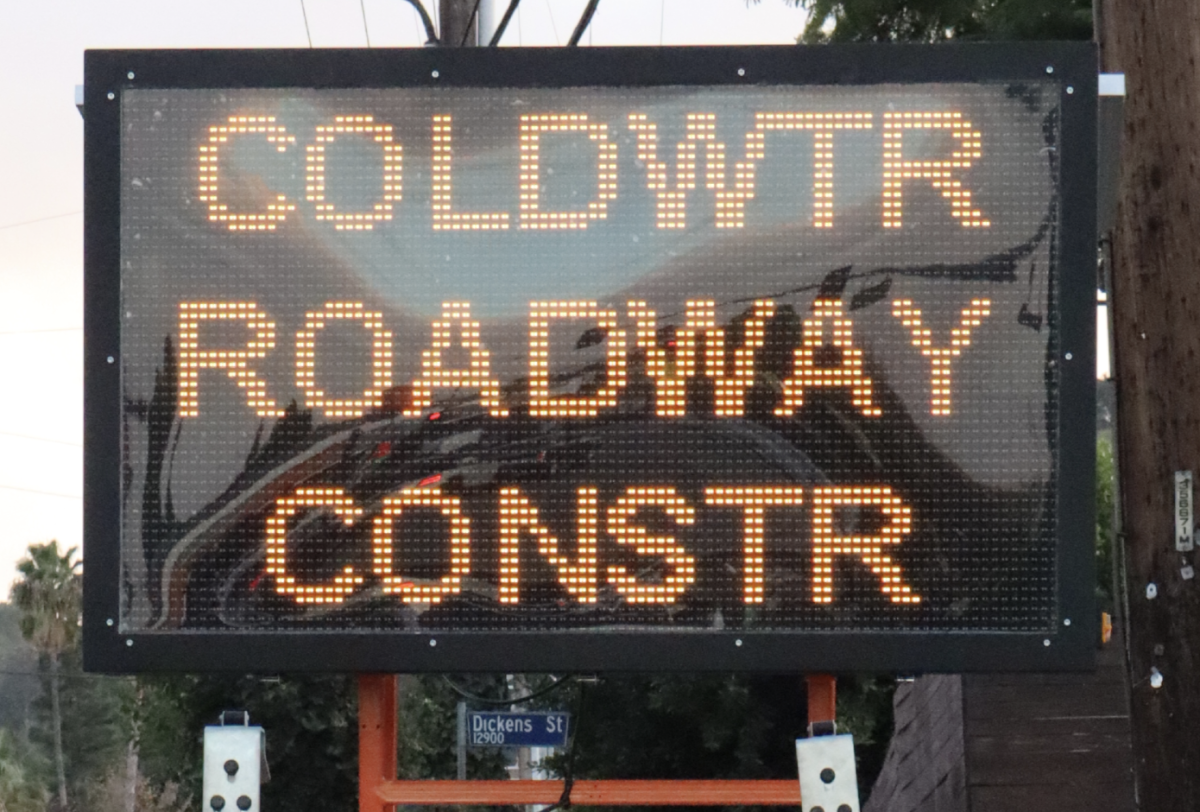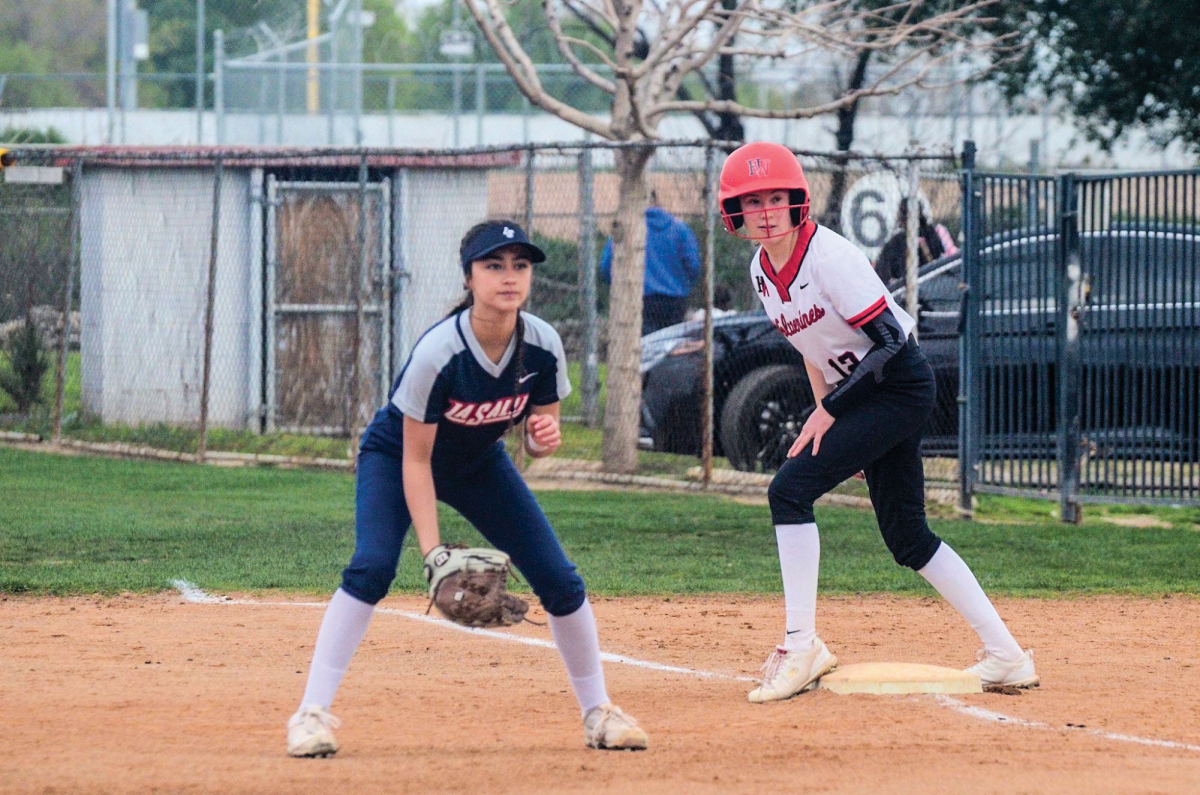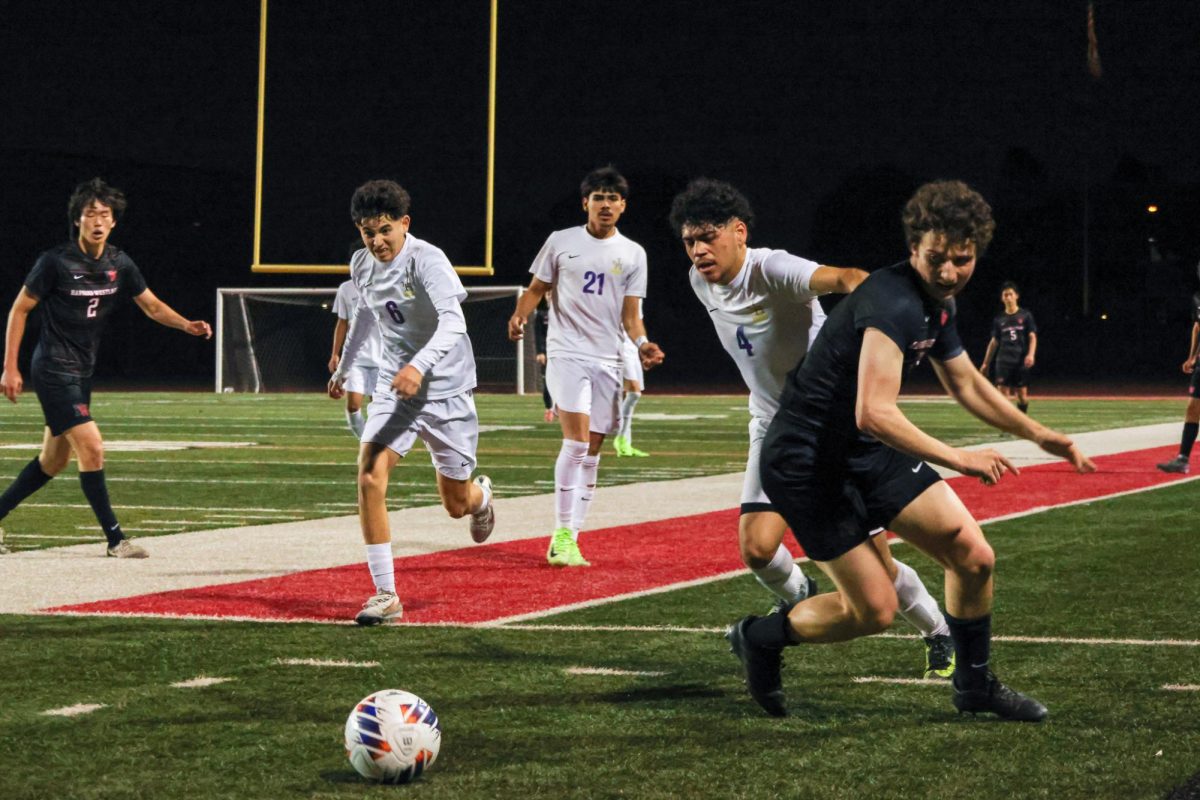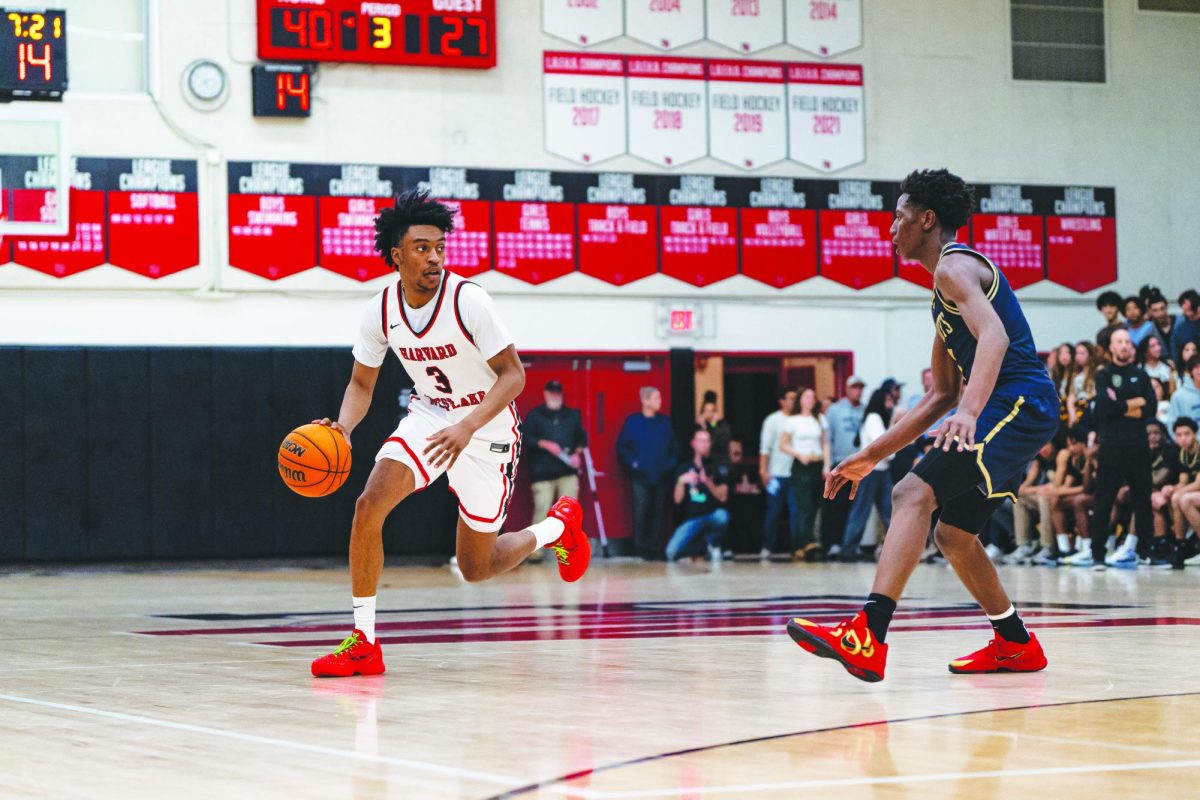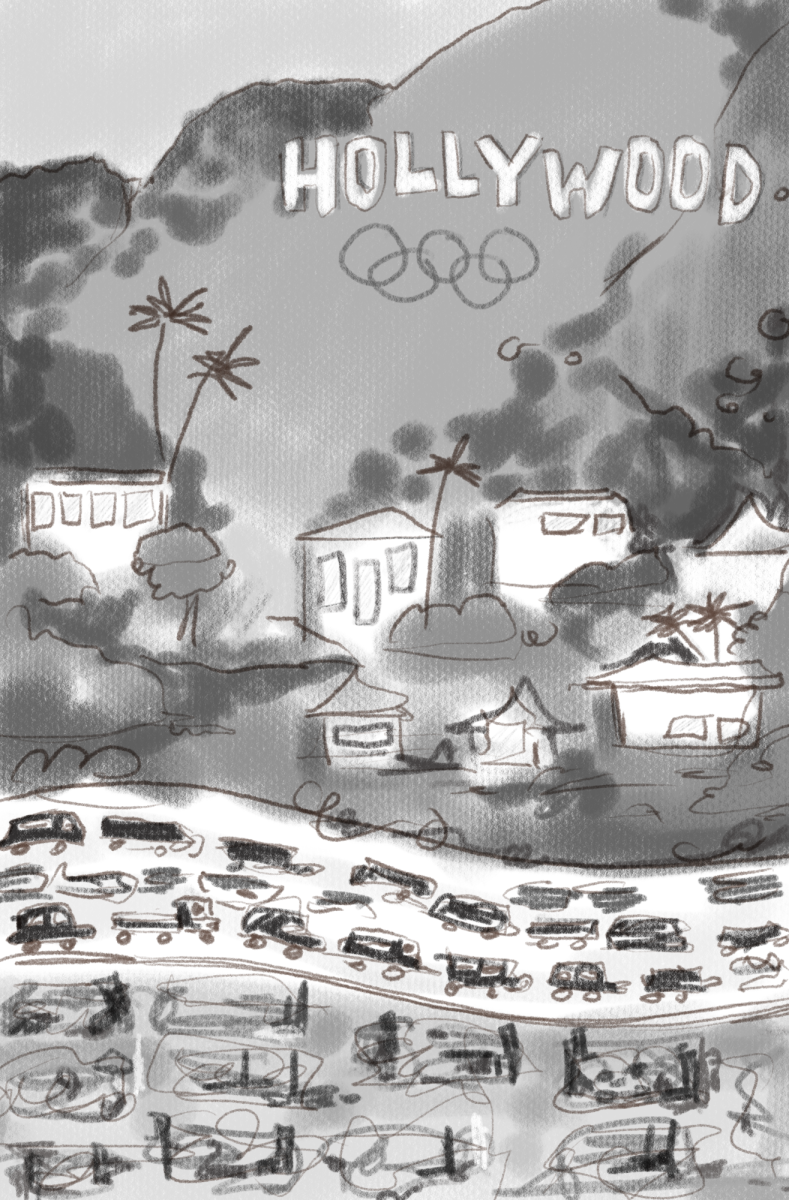Watching the news the past month, I have begun to question what the future of Los Angeles may look like. On the news I see endless traffic, thousands of homes burnt down and the inefficacy of public transportation. LA has many large events approaching within the next couple of years including the FIFA World Cup in 2026, the Super Bowl in 2027 and, biggest of all, the Olympics in 2028. The streets of Paris were flooded with millions during the 2024 Olympics, and, now, residents of Los Angeles have begun to question whether or not the city is ready to host the Olympics in 2028. As of right now, Los Angeles is not fit to host the 2028 Olympics due to poor infrastructure and transportation complications.
The recent brush fires in Los Angeles have left the city in a devastating state. An estimated 40,000 out of 321,000 acres of land have burnt down, according to The New York Times. That statistic suggests that about 12.46% of Los Angeles County was lost in the fires. Rebuilding what was lost will be extremely expensive — the cost of rebuilding from the fires is estimated to be $250 to $275 billion, according to AccuWeather, a private sector media company that provides weather forecasting services. Additionally, funding from the government will be needed to support recovery and cleanup, additional wildfire preparedness and reopening schools, California Gov. Gavin Newson said.
With hundreds of billions of dollars required to rebuild Los Angeles, the government still plans to spend billions of extra funds to prepare for the Olympics. The 2028 Los Angeles Olympics has a budget of nearly $7 billion, according to LA28, the private group organizing the Games. The Olympics budget will be spent on the construction of stadiums, hotels and retail spaces. This money should be used to support the Los Angeles community rather than build unnecessary infrastructure. Expensive investments in stadiums and hotels are unnecessary because Los Angeles has many stadiums already built and is planning on using the dormitory of University of California Los Angeles (UCLA) to host all athletes, according to UCLA Housing and Hospitality. Unessential budget for the Olympics should instead be used to rebuild homes, businesses and schools.
Additionally, public transportation during the Olympics will interfere with residents’ day-to-day life. 73% of Angelenos drive alone to work and only 6.8% utilize public transit, according to USC Lusk, a neighborhood research group. The lack of residents using public transportation shows how dependent residents are on personal vehicles and the roads driven on. According to NBC News, Mayor Karen Bass plans to address traffic concerns by borrowing 3,000 buses from across the country as public transportation and asking businesses to allow their employees to work from home. Buses take some of the busiest roads in LA, including Van Nuys Blvd., Sepulveda Blvd. and Olympic Blvd. Importing thousands of buses that will take the busiest roads that residents drive on on a regular basis will interrupt daily life by creating an increase in traffic.
On top of vehicle congestion, the Metro Rail has an expansion plan to be completed by 2028. This expansion is a great development and can make transportation easier but according to Ecolane, a transit technology company, people are discouraged from using public transportation because of delays, long waits and overcrowding. Congested long waits at Metro stations will be prominent with millions of people traveling to Los Angeles and using those routes to experience the Olympic Games. Despite the government’s efforts, current and future public transportation in Los Angeles is not fit to host the Olympics.
According to Public Works – Los Angeles, an organization that plans, designs, builds and maintains modern infrastructure, LA conducts over 1600 vehicular traffic volume counts per year. Vehicular traffic volume is the number of vehicles per hour approaching a traffic signal from all directions at different times. To put this into perspective, the average driver in Los Angeles loses 82 hours each year to congested roads and costs a total of $29.1 billion each year in the form of lost time and wasted fuel, according to Trip, a national transport research group.
In 2028, the Los Angeles Olympic Games should further limit the amount of visitors they admit to combat budget and transportation issues. This limit would monitor the amount of visas being distributed to foreigners during the time of the Olympics. Controlling the amount of visitors accepted would lower the amount of money needed to be spent as less housing and buildings would be required as less people would need to be accounted for. Placing a limit would battle the predicted extreme traffic congestion and would thus improve the possible day-to-day life for Los Angeles residents during the Olympics. Limiting the amount of visitors could also encourage selecting more important figures such as celebrities and reporters who would assist in the marketing of the event and build the audience viewing from abroad to be even larger than previous years.
To improve on predicted traffic congestion, Los Angeles should form a traffic management plan. This plan would include implementing tolls and promoting carpooling. Implementing tolls in high-traffic areas during the Olympics can discourage unnecessary driving and boost positivity surrounding public transit use. LA can provide incentives for companies such as Uber or Lyft to encourage ride sharing during the Olympics. Administering tolls and promoting ride sharing would lessen the amount of vehicles on the road and therefore reduce traffic congestion.
Present-day transportation in Los Angeles is difficult and visitors from the Olympics will only complicate it further. Given Los Angeles’ ongoing struggles with infrastructure and transportation, the city is not fit to host the Olympic Games. The current state of LA poses significant challenges that could affect the event’s efficiency, accessibility, and overall experience for visitors.

